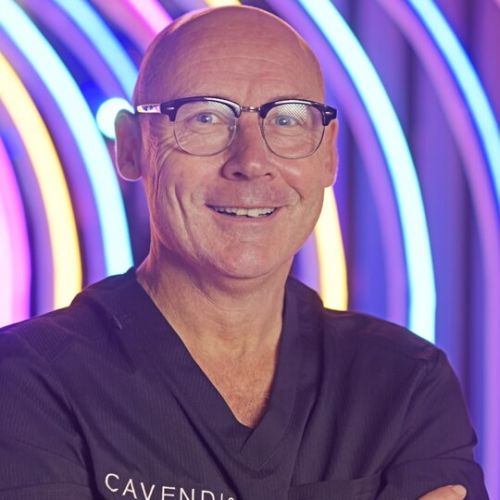TOP TIPS BY DR. MATT ON HOW TO PROTECT YOUR SKIN THIS SUMMER
July is UV Safety Awareness Month, and with summer in full swing, it’s the perfect time to think about protecting yourself and your loved ones. Check the best tips by Dr. Matt James, founder of Cavendish Clinic.
July is UV Safety Awareness Month. While sunshine is essential for our body to process Vitamin D, we need to be careful of ultraviolet (UV) radiation as it can quickly damage our skin. As we grow older, our exposure to the sun and UV light can lead to almost all visible changes in our skin like premature ageing, discolouration and skin diseases, such as skin cancer.
There are two types of skin ageing:
- Intrinsic ageing (also known as chronological ageing), which is inevitable for all of us
- Extrinsic ageing is caused by external factors such as exposure to UV light (sunlight and tanning beds), industrial chemicals, viruses of human immunodeficiency, and polluting environmental factors.
The skin is especially susceptible to sun damage as it covers the entire surface of the body; it is the first organ to come into direct contact with ultraviolet rays. It used to be thought that most sun damage occurred before the age of 18 and that this early damage triggered most of the genetic changes that later led to pre-cancers and skin cancers. This left some older folks thinking, “The damage is done; there’s nothing I can do about it.” However, subsequent research has shown that we continue to experience substantial exposure to ultraviolet rays throughout our lives; most exposure occurs after age 40. Too much sun exposure and sun damage can lead to skin cancer, which is why sun protection remains vital throughout our lives.
How to protect your skin from sun damage
- Avoid sun exposure at its highest point between 12 pm and 4 pm
- Wear clothing where necessary, especially hats and sunglasses to protect those extra delicate areas
- We recommend using an SPF 30 or 50 and of course our favourite brand Skinceuticals
UVA VS UVB Rays
UVA and UVB rays along with UVC rays are produced and emanated by the sun. As they are invisible, we cannot perceive them, only feel their effects on our bodies.

UVC rays are completely blocked by the ozone layer, so we have to protect ourselves from UVA and UVB rays.
Regardless of the weather, be it cold, rain, snow, sun or drizzle, UVA rays penetrate us all day. At sunrise, UVA rays are already in action, regardless of the time of day. They penetrate deeper into our skin and are responsible for premature ageing, skin blemishes, allergies and diseases such as skin cancer. UVA rays represent 95% of the solar radiation emitted by the sun, whereas UVB radiation makes up only 5% of the UV rays from the sun, which can cause havoc on the top layers of the skin.
This is why sun protection is needed all year round. For oily skin types, we recommend using sunscreen with a dry touch to prevent excess oiliness on the face or tinted sunscreen (SPF).
Another tip is to look for sunscreens with moisturising benefits for your body, especially for more exposed areas, such as hands, neck, arms and feet. We recommend reapplying every two to three hours when outdoors, especially when laying in the sun.
If you would like to speak to one of our doctors more on this subject, Cavendish Clinic gives everyone the chance to sit in front of one of our doctors, for a free skin consultation.
The importance of sunscreen for your face
The skin on the face is an indicator of our state of health, and, in addition, its appearance can have an impact on our self-esteem, since the face is the most visible and exposed part of our body. This means it’s more likely to suffer aggression from external agents, which is why we should take more care by using facial sunscreen. It is important to use facial sunscreen every day, as the skin on the face is constantly exposed to direct sunlight and UV rays. In addition, the skin is thinner on the face, which makes it more fragile and vulnerable to solar radiation.
What benefits can sun exposure have on the skin?
Don’t let UV rays stop you from enjoying the sunshine as sun exposure can have positive benefits too! Just make sure it’s done in a controlled manner. Ideally for short periods when the radiation is not very high:
- Stimulates the synthesis of vitamin D: it is necessary to fix the calcium in the bones so that it prevents rickets and osteoporosis.
- Stimulates the production of melanin: it is the pigment that gives us the tanned appearance of the skin and helps to protect it from UV radiation.
- Vasodilation: Vasodilation is the widening of blood vessels as a result of the relaxation of the blood vessel’s muscular walls which enhances blood flow to areas that are lacking oxygen or nutrients
- Favours peripheral blood circulation.
- Improves the symptoms of some skin diseases, such as psoriasis, acne or vitiligo, among others.
- Mental well-being: sunlight improves the state of mind.
Although these effects are positive, when exposure to the sun is excessive, the consequences become negative. It is necessary to protect ourselves from UVA and UVB, as UVA can increase the signs of ageing, and UVB can lead to sun damage such as sunburns.
In addition, focusing on the importance of protecting our children from the sun, and educating them about the risks. Most cases of skin cancer are a result of poor sun exposure habits developed from childhood.
To help protect your skin from sun damage we recommend using SPF 30 or SPF 50.
Here are our top three best sellers.